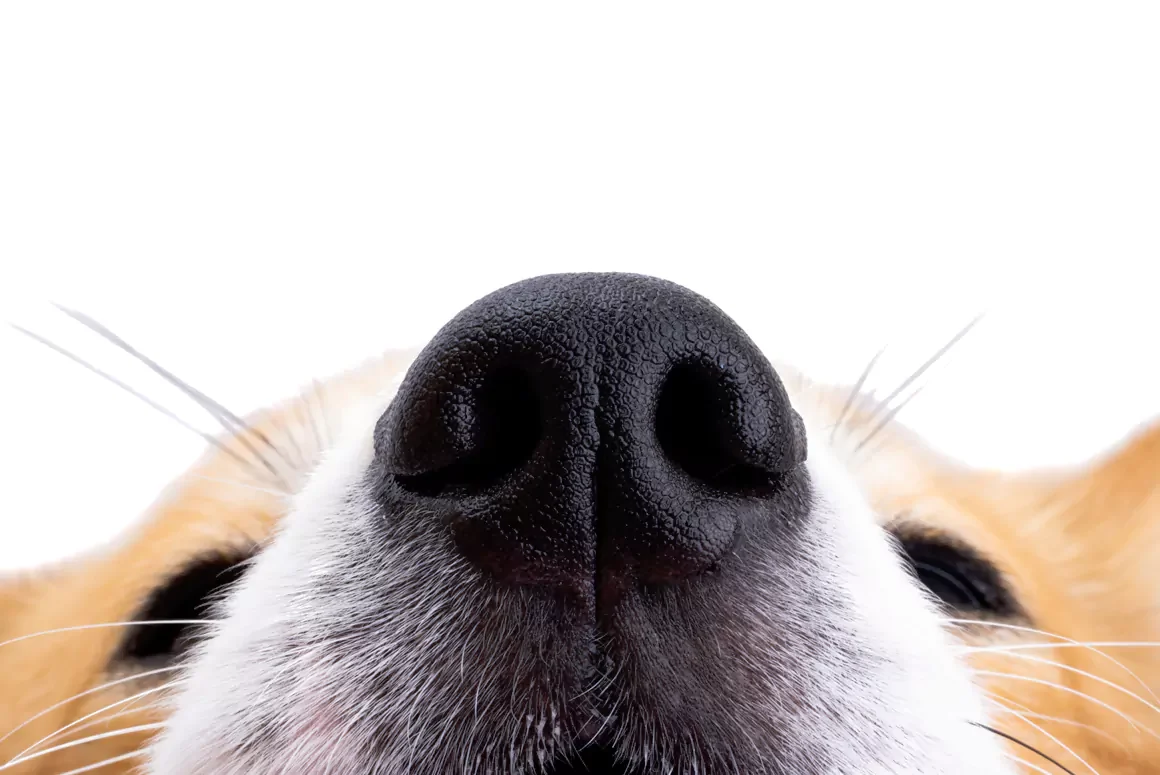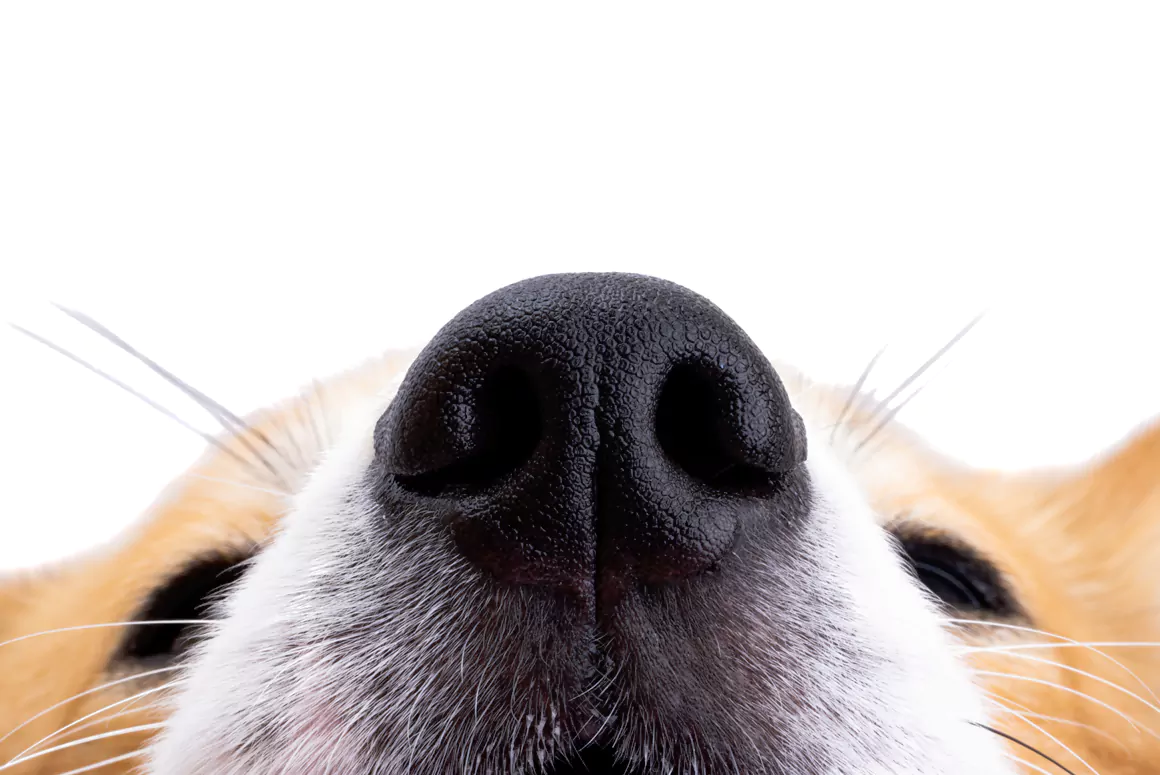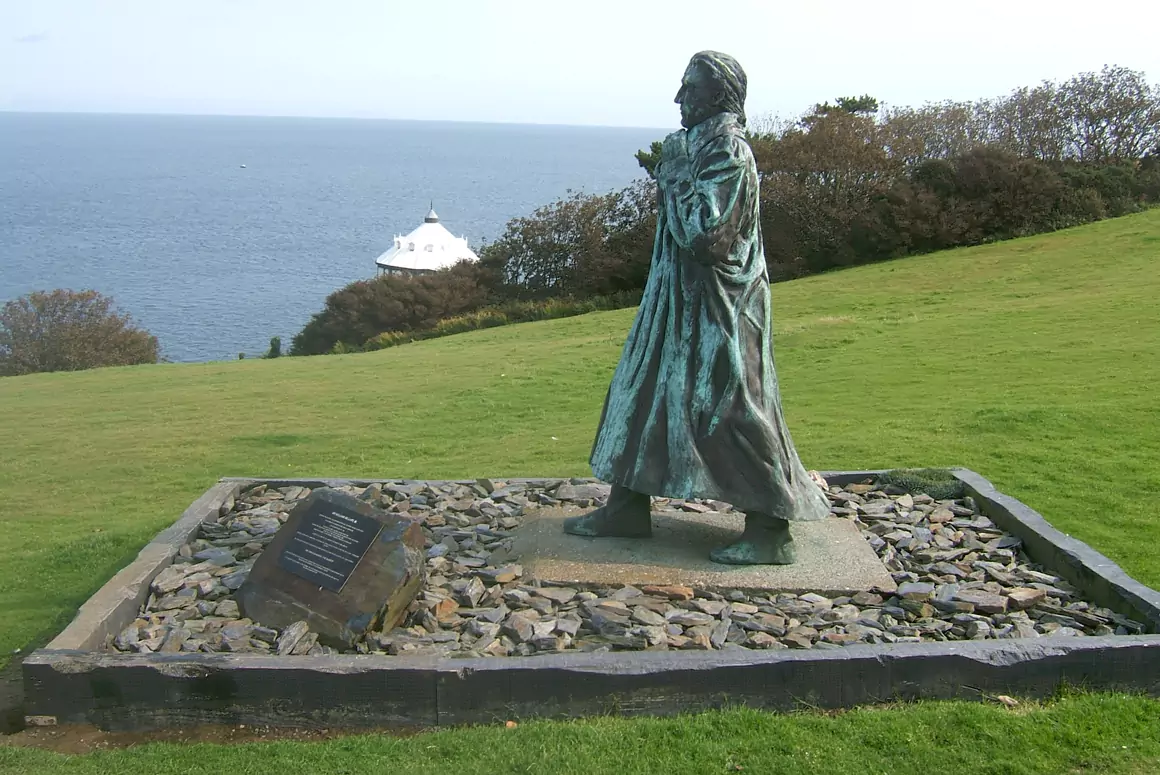The Welsh Corgi is not strictly true as there are two Welsh Corgis the Pembroke that is slightly smaller than the Cardigan.
In the early 1920’s the term Corgi started to be used and it was in 1925 that the Corgi was exhibited under Kennel Club rules but still as one breed. It took till 1934 that the Kennel Club separated the two breeds but this was after much cross breeding.
So today there is…
The Pembroke Welsh Corgi is not quite as long in body, a smaller ear and straighter front legs which was traditionally docked but since the docking ban nowadays that is not the case. Possibly in recent times the Pembroke has been the more popular breed, more than likely because of the Royal patronage it has received since the reign of King George VI and carried on by Queen Elizabeth II.
According to The Kennel Club “Of the two types of Corgi, the Cardigan is thought to be the older. The word Corgi is thought to be rooted in the Celtic ‘cor’ meaning dwarf and ‘gi’ – dog. They are both short legged which equips them well for the job of driving livestock forward.
“The Cardigan has always been undocked, and was once known affectionately as the Yard Dog (Ci Llatharid), because the measurement from his nose to the end of his tail was a Welsh yard (102 cm/40 in). He is the longer bodied of the two breeds and his front legs are slightly bowed.”
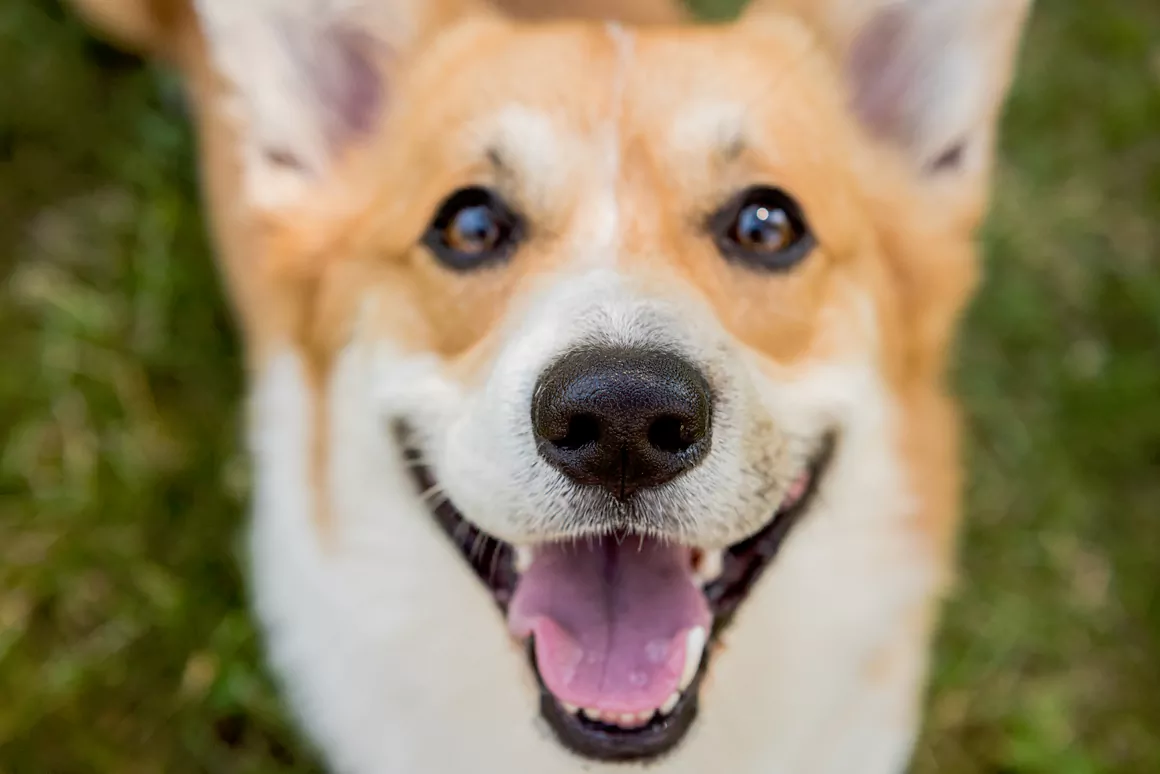
Both breeds have over the fairly recent years been on the Kennel Clubs watch list as endangered but with moves from the Kennel Club and their Discover Dogs events plus the Covid pandemic numbers have increased.
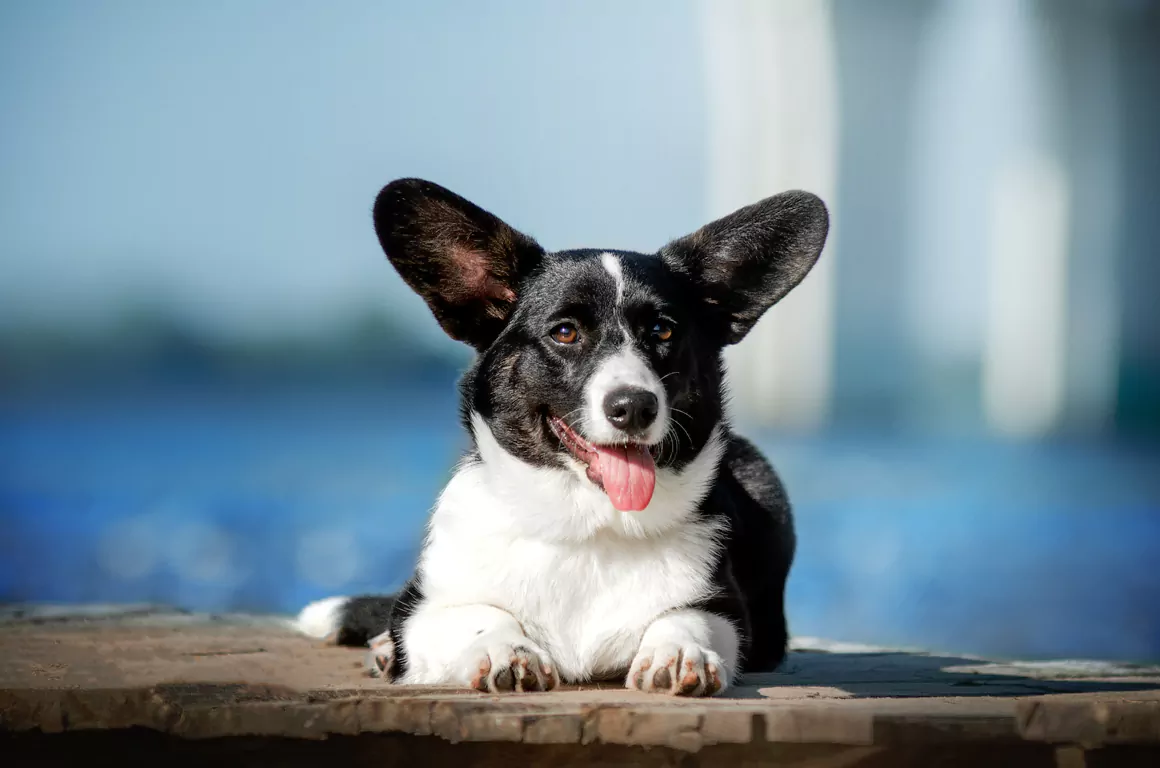
So what of the history of the breed?
Looking at this history we are ignoring the two breeds but looking at it as one at least until the 20th Century.
With a Welsh cattle dog mentioned in the Doomsday Book of the 11th century it is more than likely that the working ability of a dog or bitch was far more important than its looks or strict heritage.
The corgi was never a herding dog more a guarding and droving dog, but this later work of droving has been questioned.
Further to the Kennel Club’s official name origin some consider the name to derive from ‘cur dog’ meaning dwarf or working dog, others consider ‘Y Corgi Bach’ meaning little rascal. But in addition Ci Llatharid has been mentioned translated as Yard Dog some surmise that this refers to the length of the dog being 40 inches (a Welsh Yard). It is quite possible and very probable that all four could be correct with regional variances.
Droving cattle and sheep was the only method prior to the railways of moving stock from the country to the town be that locally for breeding stock to as far a London for the meat market.
Why the corgi has been quoted as a droving or heeling dog is by their method of cattle / sheep control by their nipping at their heels from behind or occasionally from the flanks.
There are some reports that the village of Bronnant close to Tregaron saying the corgi was the only breed of dog that lived / worked there. Some suggest that this was the origin of the Cardigan Corgi and a great story but cannot be proven.
This coincides with the fact that Strata Florida and FFair Rhos are nearby sites of medieval cattle and sheep fairs and droving posts for the drove east to the English border and beyond.
So the debate continues about the corgi being a droving dog. It is a long way from Tregaron to London for such short legs on which a muscular body sits atop. But the character of the Corgi resonates well as a dog to take beasts to the local market or even as market dogs helping to control cattle and sheep within the space of a market.
Add this to the fact that the Corgi has always been a good guard dog be that keeping cattle and sheep in an area or keeping trespassers out.
As with many breeds of animals the colours of the breed we recognise now varied over time.
This bull chested Dachshund type dog, yes, had a rich golden yellow colour but also a red gold and a blue / blue grey merle in addition to a golden brown merle that lacked distinctiveness in colour.
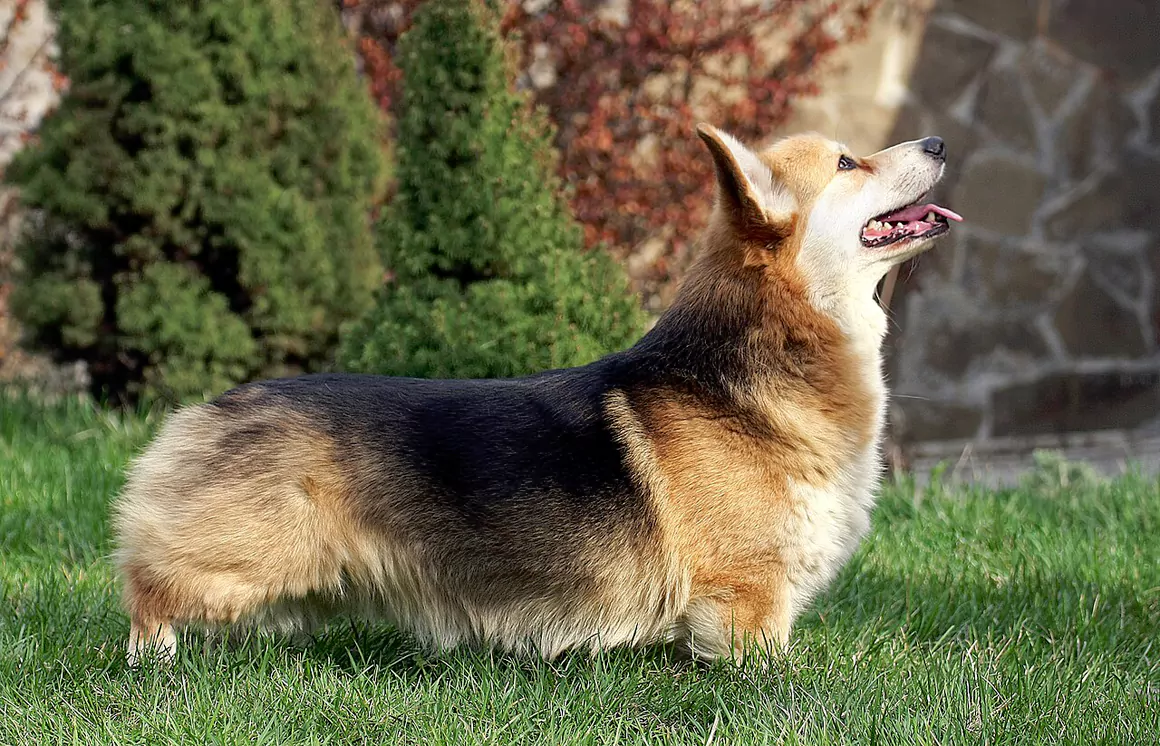
Tricolour Pembroke Corgi
Around the mid-19th century things changed around stock farming. The trains came as did another invention from the industrial revolution wire and the wire fence.
As a consequence long droves very rapidly stopped and having to guard to keep stock on your land was manged far more easily by the wire fence, making flexible stocking far easier than walls on the uplands and along with hedges in the lowlands.
So the roles of the working dog changed as well. Droving and guarding dogs tended to be replaced by herding dogs a job that didn’t come naturally to the corgi.
So it is surmised that the Corgi became a farm buildings dog but one that was small enough and with a good nature to become a house dog or pet.
At the same time two other dog breeds became popular The Red Herder and Brindle Herder. The Red Herder was a good consistent worker and courageous when it came to cattle but was unsociable and therefore not taken too heart by the farming community.
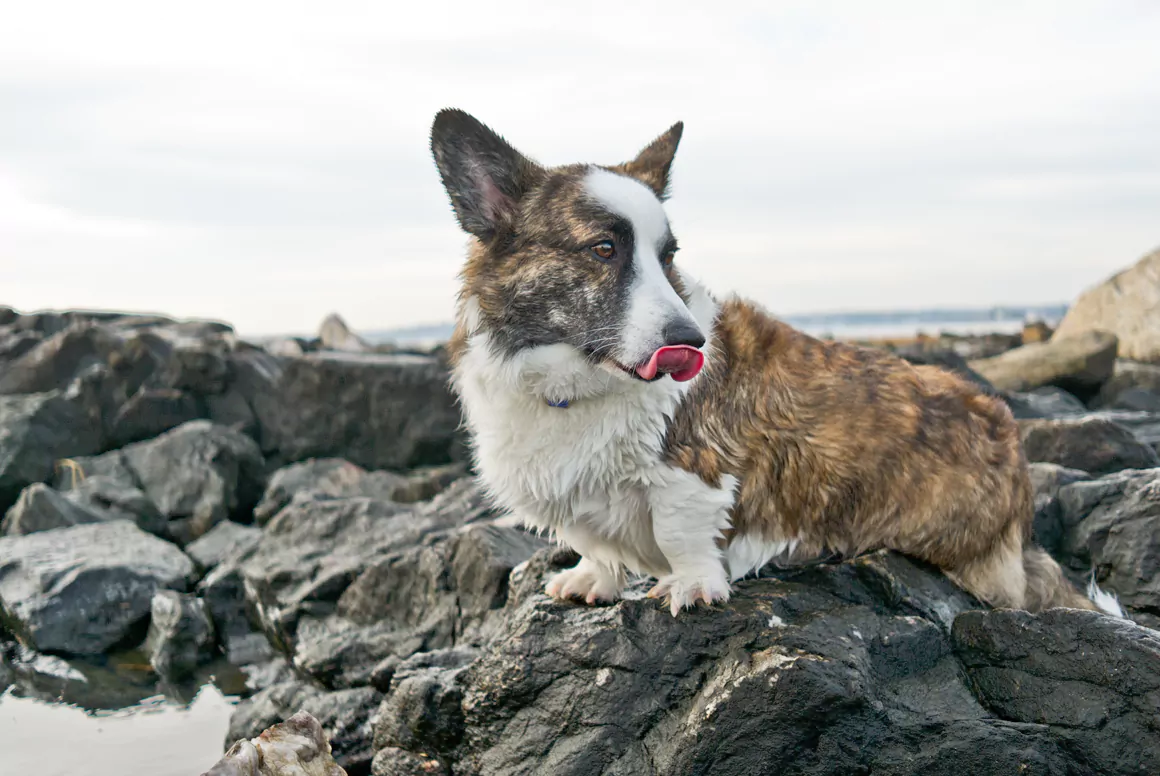
Brindle Cardigan Corgi
The Brindle Herder on the other hand was reported as a dog of charming character with courage and alert. It was also intelligent and devoted but was lightly built. This Brindle Herder was really a dog of a locality mainly the central area of west Wales and became known as the ‘labourer’s dog’. There was a problem the Brindle Herder in that many of its offspring did not make a good working cattle dog.
So local owners decided to cross the Brindle Herder with a Corgi which proved to be the dominant breed of the cross.
A new better more handsome Corgi had evolved but still lacked the herding instinct giving way to what we now know as sheepdogs to do that job.
As ever things evolve and as mentioned previously Corgis are excellent market dogs.
With trains and ships now being far more widespread there developed a trade of cattle from Ireland to the larger cites of England. Corgis where excellent dogs in the Welsh docks getting cattle from the ships into railway wagons for their further transit.
With their working status rapidly waning they became house dogs and the Pembroke Corgi, now a breed recognised in its own right, in particular was increasingly becoming popular following the Royal Princesses having them as pets.
Both breeds had their heyday in the 60’s and 70’s before stricter breeding when tourists in Wales took home a Corgi puppy for just a few pounds.
Today the breeds have further subtlety changed with showing meaning that the Pembroke Corgi has developed into a heavier boned with a propensity for a naturally short tail.
The Corgi be is Pembrokeshire or Cardigan is a breed recognised across the world and is a true Welsh Icon.
Images:
Tricolour Pembroke Corgi (Marsiyanka – CC BY-SA 3.0)
Brindle Cardigan Corgi (FatFairfax – CC BY-SA 3.0)


